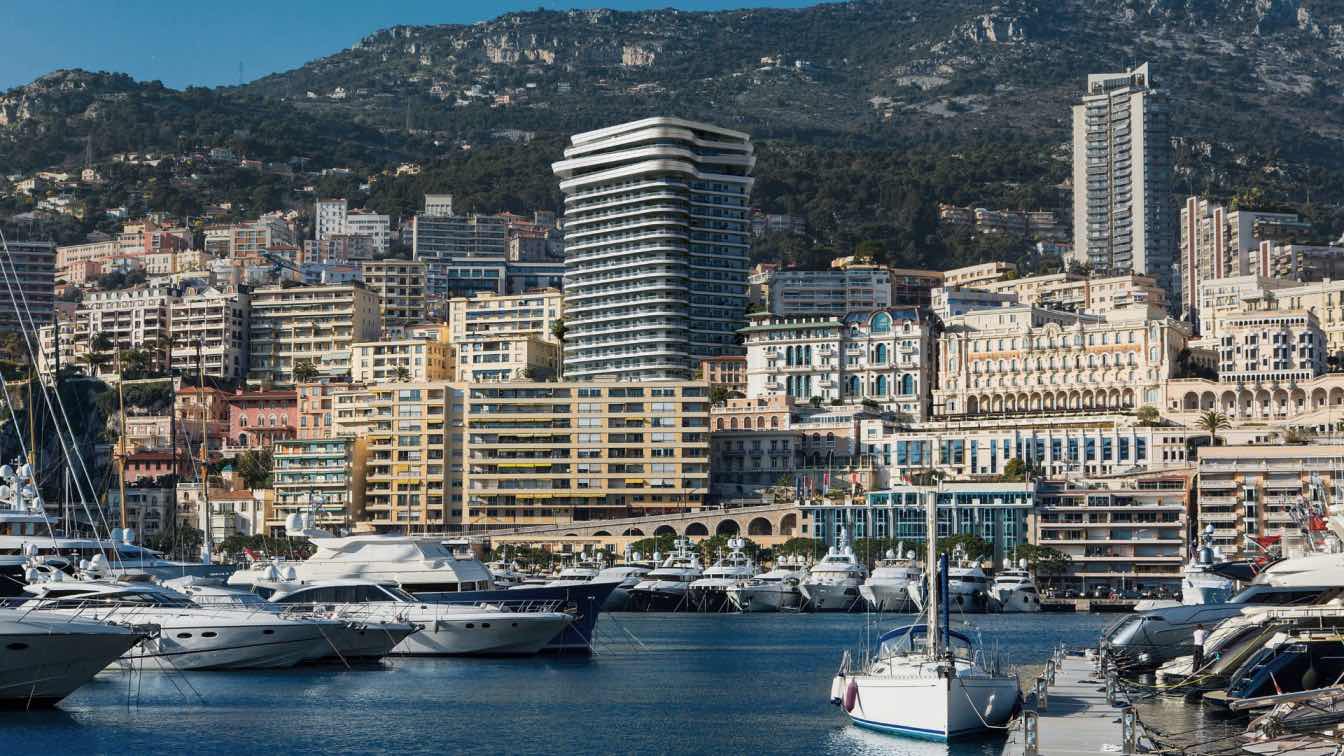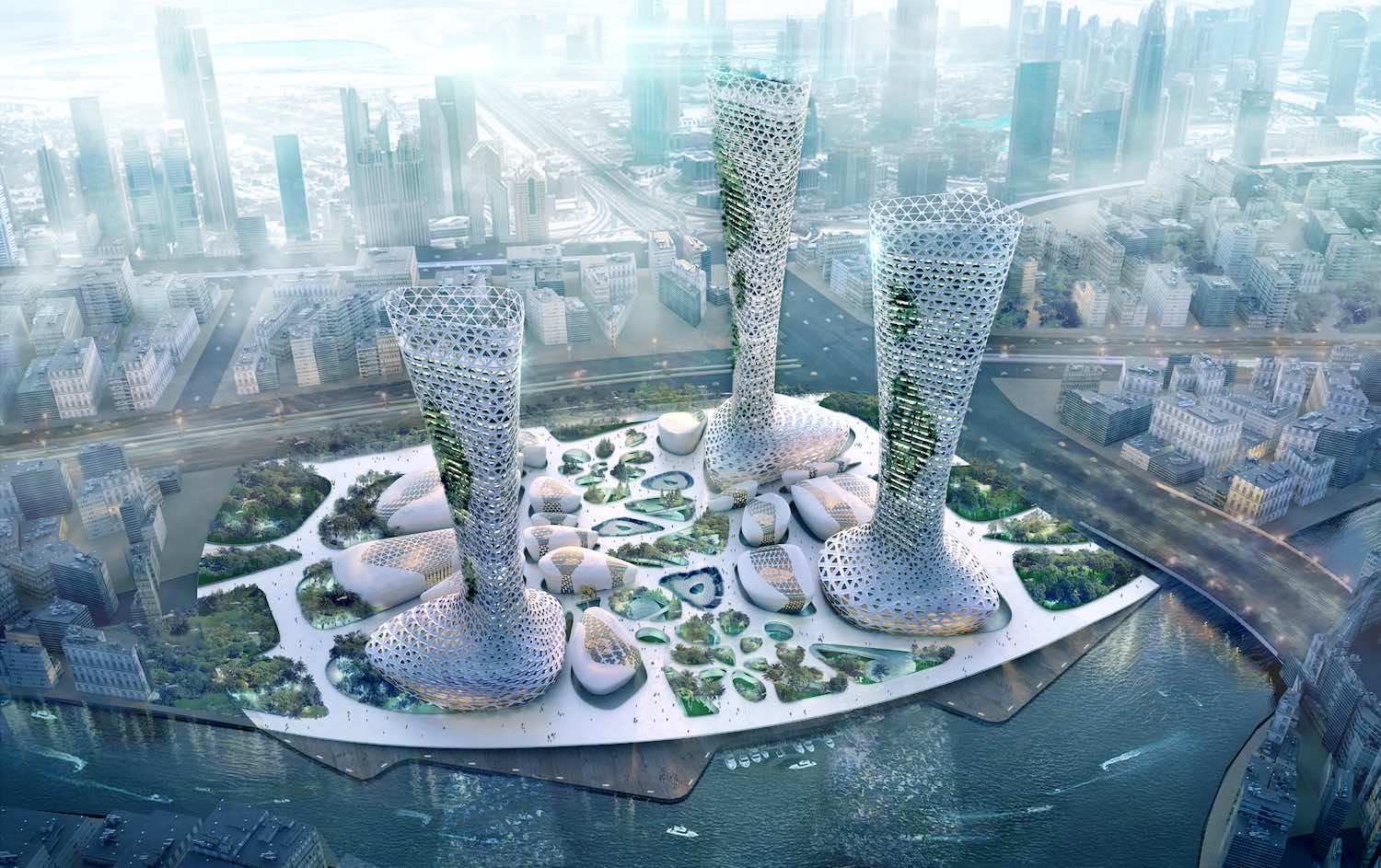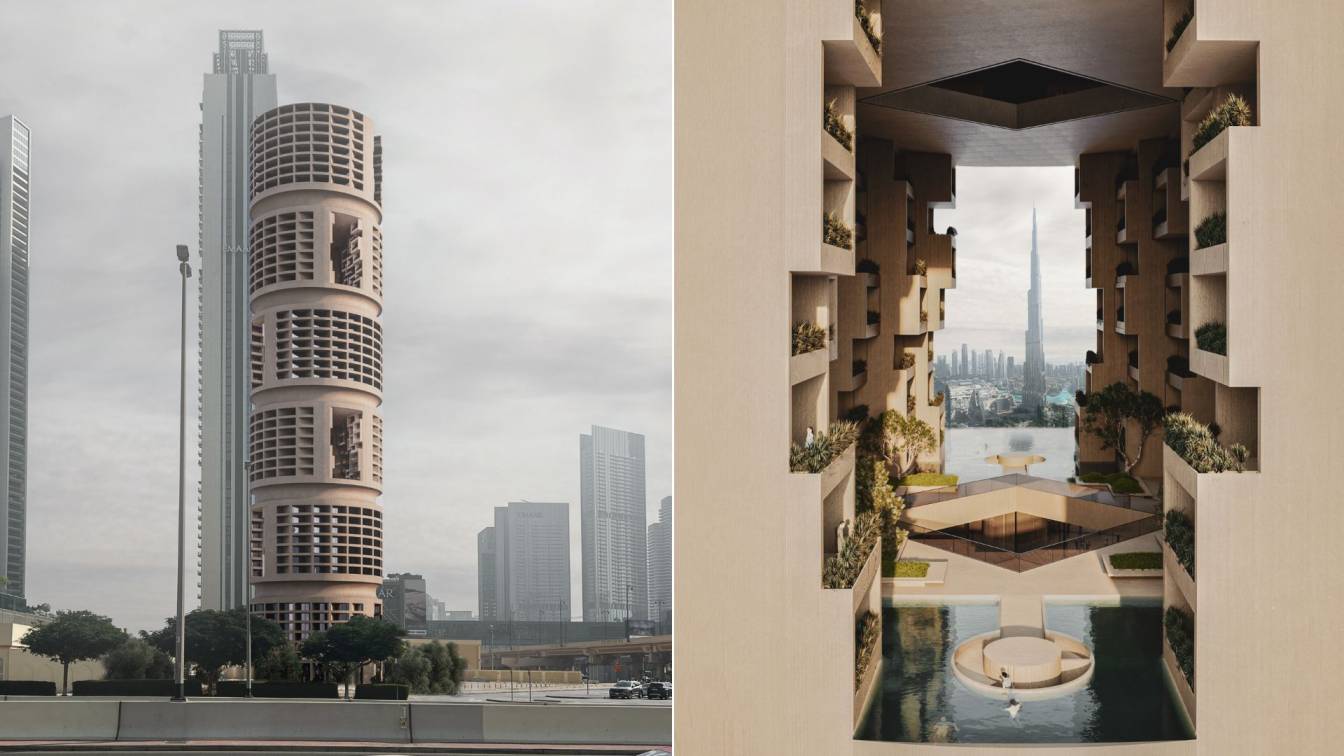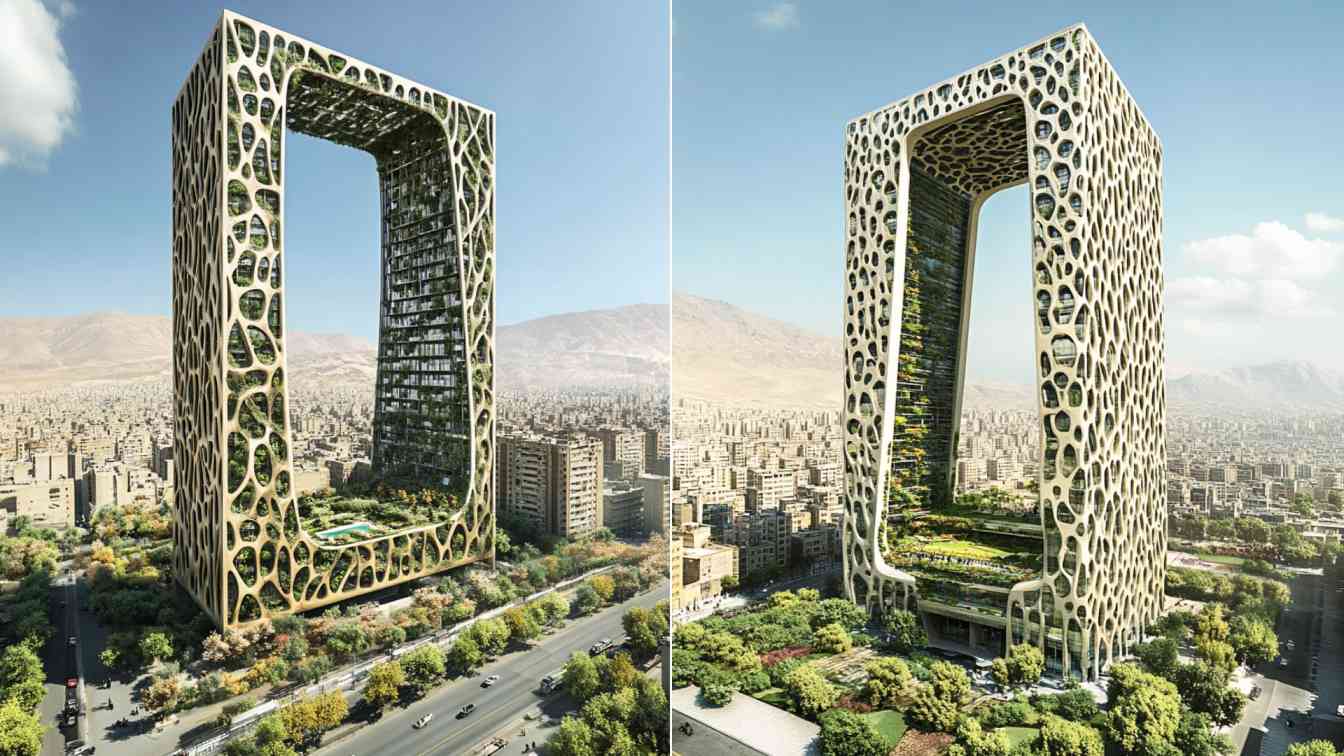Built in 1963, Le Schuylkill Tower was the first high rise building constructed in Monaco. Occupying a prominent position in Monte Carlo, the residential tower overlooks the principality’s Port Hercule with panoramic views south to the royal palace, the old town, and the Mediterranean Sea beyond.
Invited by the owner to undertake a feasibility study on the tower, Zaha Hadid Architects (ZHA) evaluated the development potential as well as the extent of works required to renovate the existing building. Following this comprehensive analysis, ZHA was appointed together with local practice Square Architecte to renovate and extend the tower. Construction works have begun with completion planned in May 2027.
With 188 apartments from small studios to four-bedroom family units, the existing tower sits on a steep site with a 22m gradient between its north and south boundaries. The tower’s lowest seven storeys are built into the rock face while the upper 17 storeys are divided into 3 individual blocks, each with a vertical circulation core on the north side of the building.
ZHA’s renovation and refurbishment of Le Schuylkill Tower respects the client's wish to retain the design legacy of the existing structure by working within the constraints of the 60-year-old building, while at the same time, raising all living accommodation standards to those now expected by Monaco’s residents.
The renovation replaces the tower's two uppermost floors (which would have required the most extensive reconstruction works) with three new floors supported by the building’s existing structure. Introducing these new floors retains the original 1963 structure and creates six new penthouses with unrivalled views of Monte Carlo’s harbour.
Increasing the floor area of the tower from 32,000 sq. m to 41,000 sq. m while maintaining the footprint of the original structure, the renovation also includes a new resident’s entrance with concierge desk on Avenue de la Costa. The reconfiguration and refurbishment of all residential interiors, and extension the original balconies into outdoor living rooms for each apartment, are also incorporated within the renovation programme.
Following extensive surveying, monitoring and modelling, the existing concrete structure will be reinforced to meet the stringent seismic standards now required in Monaco and to account for the new penthouses installed at the top of the tower.
This new structure of floors 15-18 is lightweight, low carbon steel (XCarb) enabling the penthouses to incorporate fully glazed walls with minimal framing profiles, open plan layouts and cantilevers for large outdoor terraces.
A new ceramic rainscreen façade provides a ventilated cavity and new thermal insulation. The renovation redefines the silhouette of the tower at its crown while also enhancing the building’s connection with Avenue de la Costa. Coated aluminium panels form the fascia cladding of the new terraces and balconies, while a crafted stainless-steel canopy will be installed over the entrance lobby.
The renovated tower is considered a decarbonized building by the removal of fossil-based energy supplies and replacing them with renewable energy sources. In addition to preserving the existing concrete structure, as well as the recycling, reuse and repurposing of existing building components, the selection of materials, products, technical equipment and systems have contributed to reducing whole life carbon emissions.

The tower’s whole life carbon assessment resulted in a global carbon impact of 623 kgCO2e/m², meeting the 2030 RIBA Climate Challenge threshold of 625 kgCO2e/m.
The renovation programme scores 75/80 points across all seven categories of the BD2M environmental accreditation scheme that assesses factors including the use of eco-performing materials, energy consumption monitoring, summer comfort analysis, environmental project development, envelope air tightness and site management.
Introducing both rain and grey water recycling to reduce water consumption, the renovation also improves the thermal performance of the building envelope, enhances solar protection, and installs an on-site waste management system. Additionally, a notable reduction in the tower’s overall energy demand will be achived by replacing the original building services with a new system connected to the district’s sea water cooling network which also provides hot and cold water to all apartments.
To further optimise use of the tower’s original structure, new communal spaces will be incorporated including a grand dining room with catering facilities for residents to entertain large gatherings of their friends and family, as well as a new club lounge, gym, pool and spa.



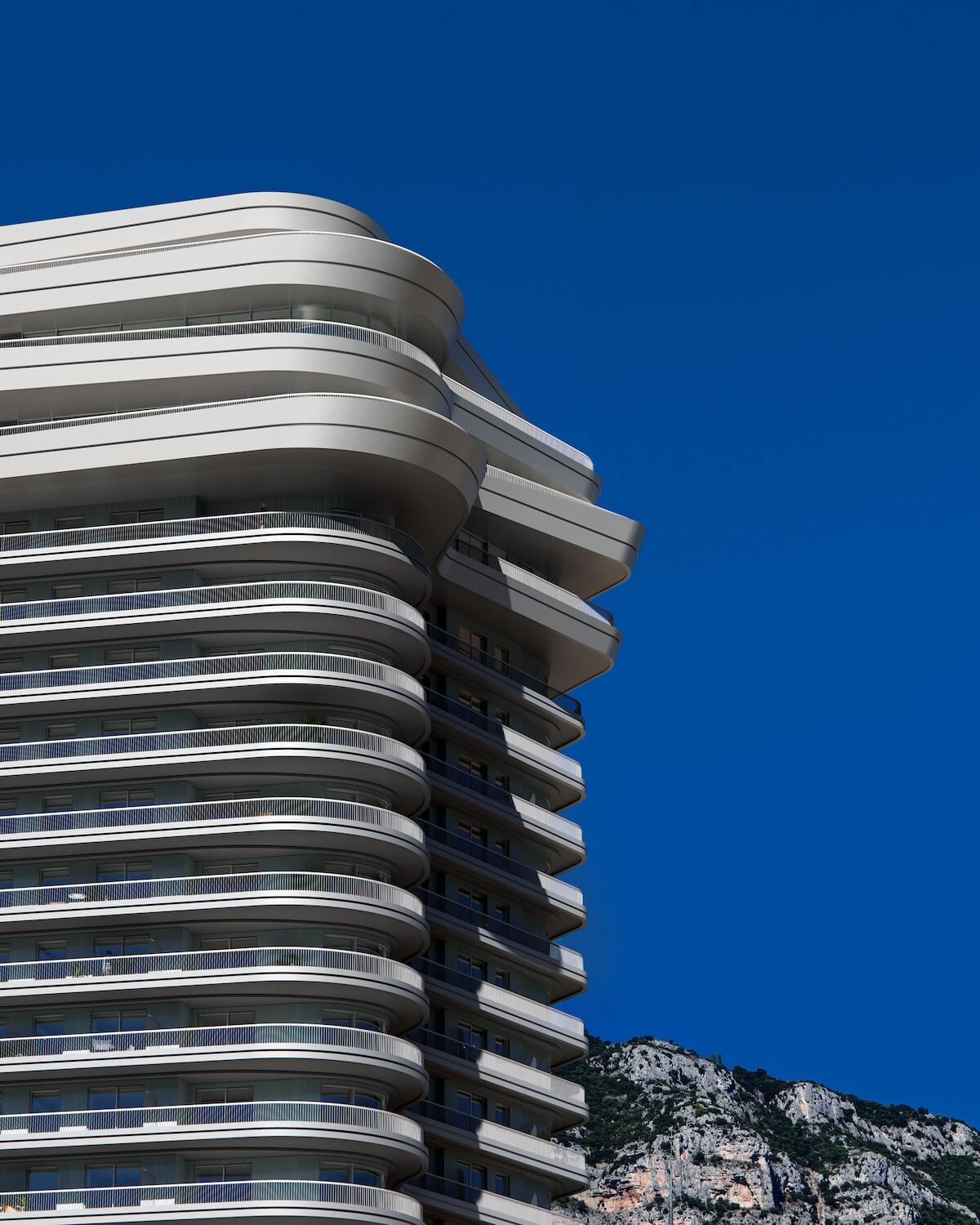














Project Team
Owner: HPP
Developer: SAM Le Soleil
Architect: Zaha Hadid Architects (ZHA)
ZHA Project Director: Stephane Vallotton
ZHA Project Architect: Pelayo Bustillo Macias
ZHA Project Leads: Lenka Petrakova, Frenji KoshyZHA Project Team: Afsoon Eshaghi, Alex Nap, Anna Uborevich-Borovskaya, Branko Svarcer, Chiara Baiocco, Drew Merkle, Hyun Jin Kim, Ken Bostock, Martin Pfleger, Meenakshi Sharma, Michelle Sin, Nicolas Tornero, Othamane Kandri, Roberta Sartori, Sharon Sin, Thanh Dao, Yasemin Muduroglu, Yihoon Kim, Zohra Rougab
ZHA Competition Project Director: Cristiano Ceccato
ZHA Competition Associate: Lydia Kim
Consultants
Local Architect: Square Architecte
Structural Engineers: Eckersley O’Callaghan and Oteis
Cost Consultant: VPEAS
Environmental Consultant: A.I.A.
Façade Engineering: Eckersley O’Callaghan
M&E Engineering: Ingetec
Fire Engineer: Ingetec
Landscape Consultant: Jean Agapit
Lighting Design: 8’8”
Acoustic Consultant: Ingetec
Project Manager: M.I.P.
Signage Consultant: Space Agency

